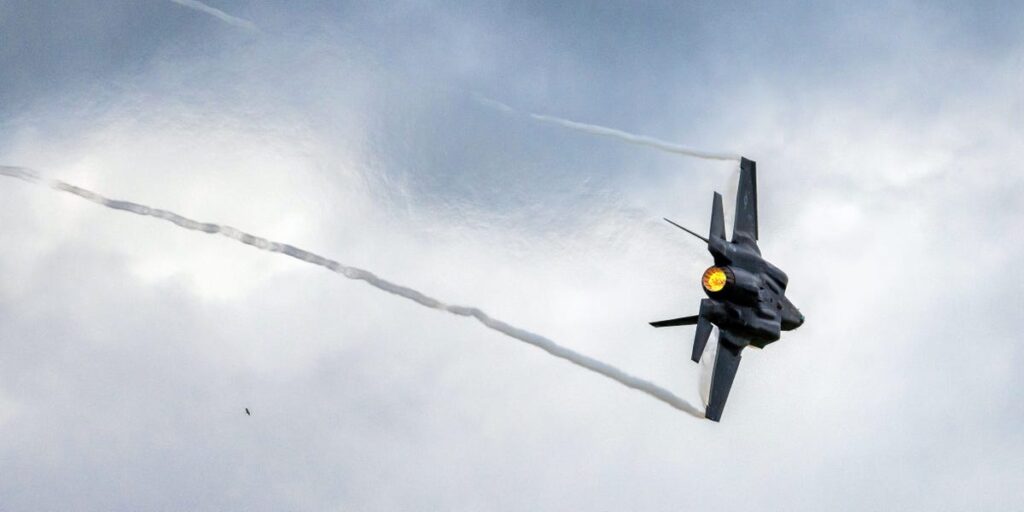- Two NATO fighter jet pilots discussed their recent Eurofighter vs F-35 dogfighting competition.
- The German pilot said his US opponent’s F-35 had commendable stealth capabilities.
- The pilots used paper airplanes to talk about their fight and their various maneuvers.
Two NATO fighter jet pilots recently compared notes after going head-to-head in a “dogfight” in the skies above Germany.
In a video shared by the US Department of Defense late last month, German pilot 1st Lt. Alexander Grant and American pilot Capt. Patrick Pearce discussed their battle during a dogfighting competition at Ramstein Air Base and the differences between their respective Eurofighter and F-35 jets. They used paper planes to demonstrate and talk about their maneuvers.
The US military said that this event was the first one-on-one competition of its type hosted by the US Air Force in Europe and “allowed NATO’s fighter pilots to test their mettle against aircraft they’ve never fought before, providing an invaluable opportunity to familiarise themselves with Allied equipment and tactics.”
Grant flew the Eurofighter Typhoon, a European fighter manufactured by a consortium of Airbus Defense and Space, BAE Systems, and Leonardo, while Pearce flew a US Air Force F-35A, a fifth-generation jet made by Lockheed Martin.
In the competition, neither Grant nor Pearce knew they were facing each other. Pearce explained they’d been given a slip of paper detailing a location in the air that they’d fly to before engaging in a dogfight, a loosely used term for air-to-air combat.
As the aircraft approached the merge, Pearce, a US Air Force pilot who goes by the call sign “Hobbit,” suddenly spotted his foe, thinking to himself: Oh boy, there’s a Eurofighter.
“I’ve never seen an F-35 so close,” Grant, call sign “Stitch,” said, explaining that he has only trained alongside other Eurofighters in Germany.
The competition allowed both pilots to understand the advantages of their jets. Grant said the Eurofighter Typhoon had a “little bit more thrust,” but he said if the dogfight were real, the F-35 would “probably kill me beyond visual range even before I knew he was there” considering the fifth-gen fighter’s stealth capabilities.
In the video, Grant and Pearce demonstrated how their jets interacted in the sky by using paper airplanes. Pearce said during the dogfight, the agile fourth-generation Eurofighter Typhoon was able to win by getting behind the F-35 and targeting the jet with guns, although the fighters weren’t actually armed.
It’s tough to get in that position, though, and easy to unintentionally cede the advantage, but Grant was able to keep his closure speed under control.
“You can just feel it in the pit of your stomach,” Pearce said, saying it’s “like man, this guy just won the fight.”
The strength of the much more advanced F-35, as Grant hinted at in the video, is not battling it out at close range, but rather stealth kills beyond visual range or using its onboard capabilities to quarterback other assets in the area for a kill.
Dogfighting involves a lot of high-speed maneuvers that put a lot of strain on the pilots. “You’re underneath a lot of Gs,” Pearce said. “You’re going through some pretty extreme flight dynamics.” In particular, it can really put a lot of strain and pressure on the neck as pilots look around to keep tabs on their enemy.
The competition, the US military said, “drew more than 30 jets from nine Allies, namely Belgium, Denmark, Finland, France, Germany, the Netherlands, Norway, the United Kingdom and the United States, to Ramstein Air Base in Germany, which hosts the headquarters of NATO’s Allied Air Command.”
Read the full article here


